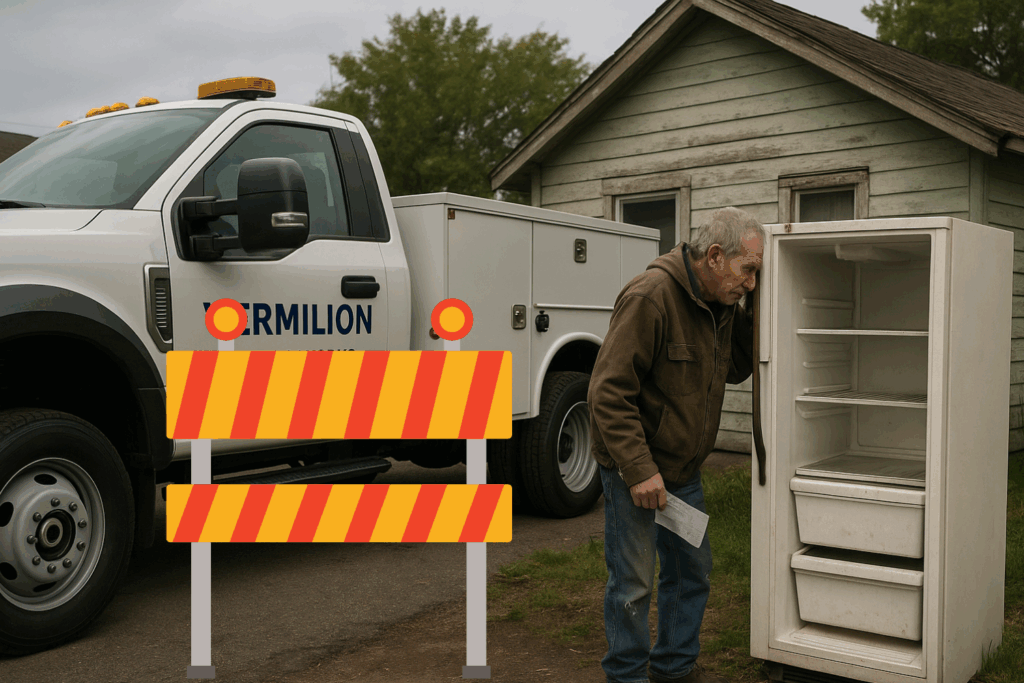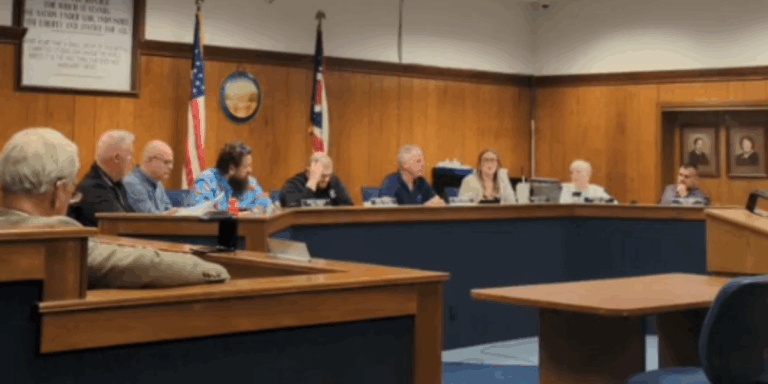
At the May 5, 2025 Vermilion City Council meeting, tensions emerged as city leaders weighed infrastructure spending against the financial burden already felt by residents.
“We’re talking about the people of this town—who live here, breathe here—and they’re struggling,” said Council at Large Gary Howell. He expressed frustration that council had quickly approved large equipment purchases without hesitation, while being urged to show caution about providing relief to residents through reduced utility rates.
Finance Director Amy Hendricks responded that the difference lies in the unknown future cost of the wastewater project. “The trucks are a more finite, one-time type of cost. We have so many unknowns with where the wastewater project is going to go,” she said, emphasizing that any changes to utility rates without a final project plan could later force larger increases.
Mayor Jim Forthofer added perspective, noting the generational neglect of the city’s sewer infrastructure. “We’re looking at trucks that are 27 years old and a plant that hasn’t been seriously readdressed since the Browns were in the playoffs in 1962,” he said. “Everything we’re doing tonight and every night serves the people, whether it’s salting roads or fixing broken water mains, or fixing a wastewater plant so they can flush their toilets.”
Despite talk of a $450,000 fleet upgrade, only about half of those expenditures were approved during the meeting:
The outcome showed a clear division: a council trying to meet real infrastructure needs without adding to the financial strain of Vermilion residents, and an administration urging long-term planning for unknown EPA compliance costs.
As Mayor Jim Forthofer put it, “This is a boat with holes in it. If we don’t keep at it, it’s going to sink.
Mayor Forthofer description of the situation as “a boat with holes in it,” is a warning that if the city doesn’t keep at it, “it’s going to sink.” But critics might argue that some of those holes are going to be self-inflicted, caused by the city’s own discretionary spending. With only part of the $450,000 in truck purchases approved at the meeting, council’s hesitancy seemed to reflect a growing tension: are we plugging the right holes, or drilling new ones?
For Vermilion’s residents, the debate isn’t theoretical… it’s about survival. As the city moves forward with nearly $450,000 in proposed truck purchases while residents struggle with steep utility bills, aging roads, and rising food costs, the disconnect between local government priorities and household realities is becoming harder to ignore. The choices made in council chambers directly affect whether families can afford groceries, whether streets are drivable, and whether relief is truly on the horizon—or just another promise lost in the noise of municipal spending.







Well written and stated. “Priorities” are most always nuanced. One person’s priority is another’s frivolity. Some households can afford new cars every 3 years and some households must buy used. It’s situational. Given the Community and City challenges, to not consider alternatives to new, might be considered fiscally irresponsible at best and unconscionable in the least. The President of Council reminded that there was a time when the City only had $75,000 in it’s coiffures, and couldn’t afford such expensive vehicles. And to consider that now might be the best time to spend the Citizen’s money on new trucks. I might argue that rationale got the City into such! Bravo to the Council members that think there other more fiscally prudent alternatives…. and priorities.